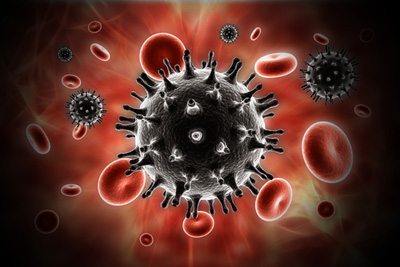HIV Returns in Two Men Thought ‘Cured’ by Bone Marrow Transplants
Researchers in Boston announced last week that HIV had once again been detected in two patients who had previously been thought to be rid of the virus. The results suggest that HIV reservoirs, latent cells that have the genetic code of the virus, are more persistent and deeper in the body that scientists had thought.

Researchers in Boston announced last week that HIV had once again been detected in two patients who had previously been thought to be rid of the virus. The two men underwent bone marrow transplants several years ago as a treatment for Hodgkin’s lymphoma, a cancer of the blood. After the transplants, HIV was undetectable in the men’s blood. Earlier this year, both men agreed to stop taking their HIV medication so scientists could determine whether the bone marrow transplant had rid their bodies of HIV or whether the medication was keeping the virus in check.
In July, the researchers presented their initial, hopeful results. One of the men had been off of medication for seven weeks and the other for 15 weeks, and neither had any traces of HIV in their blood. This research followed the 2010 report of the “Berlin patient,” now known as Timothy Ray Brown, who was given a bone marrow transplant from a donor with a rare genetic mutation that is thought to be resistant to HIV. Brown’s transplant was in 2006, and he was virus-free as of 2010 when researchers published a peer-reviewed paper on his treatment. There has been some doubt cast on his “cure” since then, however, because in follow-up testing there were “signals of the virus,” but researchers were not able to determine if it was a re-emergence of HIV, a reinfection with a new strain of HIV, or just contamination in the test.
Regardless of the new results on Brown, scientists did not see his course of treatment as one that could be readily repeated in many patients. For one thing, there are a limited number of donors with the genetic mutation that resists HIV; it is thought to occur in only one in 100 Caucasians. Also, Brown was given very powerful chemotherapy and radiation, which many patients would not be strong enough to survive, to prepare his body for the bone marrow transplant.
The approach taken in Boston was more promising because it required less chemo and radiation and could use more readily available donors. Still, bone marrow transplants are risky and are only thought appropriate for HIV patients who are suffering from cancer that is not responding to other treatments. Nonetheless, doctors hoped that using bone marrow transplants to rid these patients of HIV could teach them more about the virus and lead to a more generalizable cure.
In August, just a month after the initial announcement of success, HIV was once again found in one of the men in Boston. He began taking HIV medication immediately. The second patient was given the option of restarting his medication at that time but opted to continue the study. In November, HIV was detectable in his body as well, and he also started taking medication again.
The researchers have not yet analyzed their data, but felt it was important to announce this setback because other studies were being designed around their initial success. Dr. Timothy Heinrich, the lead researcher on the study, told the Boston Globe, “We felt it would be scientifically unfair to not let people know how things are going, especially for potential patients.”
He went on to say that the new finding suggests HIV reservoirs, latent cells throughout the body that carry the genetic code of HIV, are more persistent than we realized. He told the Globe, “[W]e need to look deeper, or we need to be looking in other tissues … the liver, gut, and brain. These are all potential sources, but it’s very difficult to obtain tissue from these places so we don’t do that routinely.”
The new results were met with widespread disappointment among scientists, but Heinrich and his team remain optimistic and believe that even though this experimental treatment was not successful, they learned a lot about the virus that can inform future treatments. “We go back to the drawing board,” said Heinrich. “It’s exciting science, even if it’s not the outcome we would have liked.”

